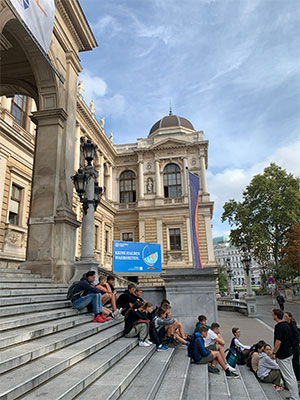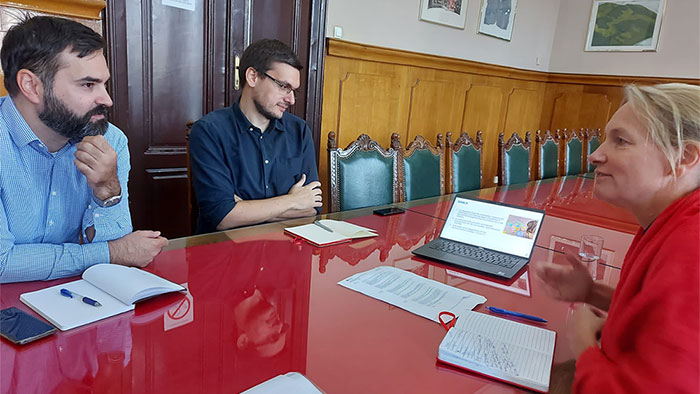A new report “Students' user journey going on mobility” conducted by Circle U. is the result of a Erasmus staff exchange project over three months, carried out by Berit Kolberg Rossiné, Director of Communications at the University of Oslo. From September to November 2023, she visited all the universities in the Circle U. alliance to find out more about how students seek information, which channels they use and how easy their user journey is from the beginning of the mobility process to the moment they return with their transcripts.
“Circle U. has great ambitions for student mobility in the coming years, but we need more knowledge about what works well and what we need to improve to reach our goals. I hope that my report will provide some valuable insight,” says Berit Kolberg Rossiné.
Recognition and funding
She interviewed respondents and made an overview of how users gather information at all the nine universities. Her research showed that worries related to recognition of studies taken abroad into students' annual study plan and economy are common among all students.

“The students experience uncertainty as to whether they can afford to study abroad and whether these studies will be recognised and accepted at their home university. These two issues are also related in many instances, as many universities link the funding to the number of credits taken each semester,” she says.
Furthermore, regulations and procedures form the basis for both physical and digital steps in the journey that influences the user journey going on exchange.
"The culture for recognition and recommendations for going on exchange varies among faculties and academics. The universities also vary in their procedures regarding nomination and how digital the mobility process is. This affects the students’ choice of going on mobility," says Rossiné.
“To make it easier to students to get international exposure, universities should consider developing more short term pre-approved study offers which releases funding and improve the digital journey. In order to do so they need to simplify their procedures and their digital information and systems,” Rossine says.

Coordinate information
The most important source for information about mobility and exchange, are the websites of the students' home university and of the host university. The problem arises when the information is not coordinated or updated, and the students get conflicting information.
We must remember that our students expect digital solutions to be user-friendly and intuitive, and they are eager to find answers to their questions as soon as possible in their journey.
Rossiné has some recommendations:
“Making the universities websites more user friendly, coordinating content and aligning manual procedures and digital systems will be significant improvements, but further investigation into each university's digital systems is necessary. We must remember that our students expect digital solutions to be user-friendly and intuitive, and they are eager to find answers to their questions as soon as possible in their journey. Consequently, universities should improve their websites and look at the user journeys between universities,” she concludes.
